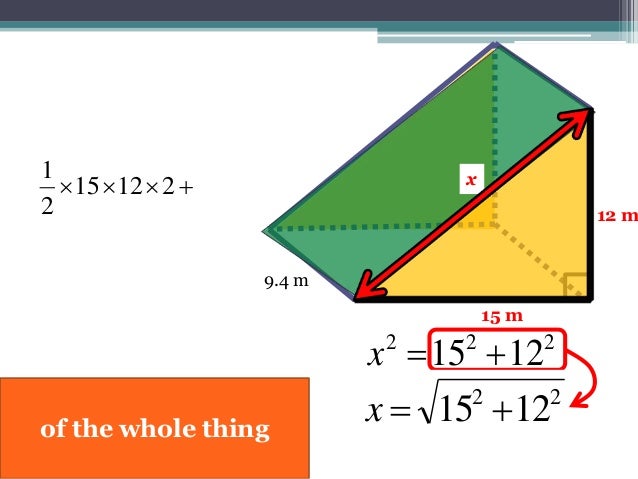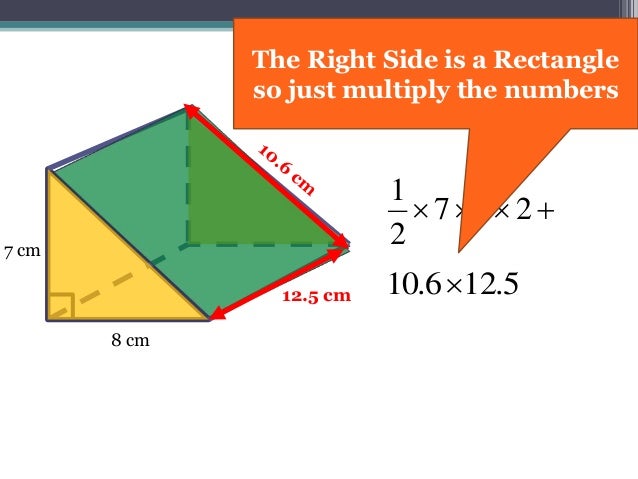

Labour ineffectiveness can be a significant drawback of such methods.
Surface area of a triangular prism manual#
On the other hand, the traditional sample-based methods involve manual sample collection of the liquid from the tank in fruit/vegetable juice making and in wineries or breweries. However, these techniques are manual, time-consuming, and most importantly, the fruits or vegetables are damaged during testing. The Brix monitoring of fruit and vegetables by destructive methods includes sensory assessment involving sensory panels, instruments such as refractometer, hydrometer, and liquid chromatography. The measurement of sugar content, or Brix, as it is commonly known, is an essential part of the quality analysis of the agricultural products and alcoholic beverages. Quality assessment of fruits, vegetables, or beverages involves classifying the products according to the quality traits such as, appearance, texture, flavor, sugar content. These conclude the hydrocolloids solution of 0.3% XG and 0.5% CMC successfully stabilise the betacyanins in the FRDFD at 25☌ over four-week storage. Meanwhile, all samples added with 0.3% XG and 0.3-0.5% CMC remained no significant change in viscosity, pH, aw and TSS after storage. After four-week storage (25☌), the formulation of 0.3% XG and 0.5% CMC had significantly reduced the betacyanins degradation from 60.55% to 30.66%. All the samples’ pH, aw, total soluble solids (TSS) and betacyanins content were not significantly affected by the hydrocolloids solution added. Results revealed the viscosities of all samples were significantly increased as the hydrocolloids concentration increased. The present study was to improve the fermented red dragon fruit drink (FRDFD) betacyanins stability by incorporating hydrocolloids solution of xanthan gum (XG, 0.15-0.30%, w/v) and carboxymethyl cellulose (CMC, 0.3-0.5%, w/v) to produce Improved-FRDFD-dH2O. Thus, the point we have found is a local minimum.Red dragon fruit is rich in health-benefited betacyanins that are susceptible to degradation. The second derivative of this guy is strictly positive for positive s, implying the function is concave up for positive s. To do so you must take the second derivative. We'll end up with h = 2 * 5 2/3 *7 1/3 / sqrt(3).ĮDIT: It's a bit pedantic, but technically you have to make sure that it's a local minimum at the value of s that I've found. From there, we can easily find the height by substituting into our previous formula. We want to find the minimum so we set SA' = 0.

SA = 2(sqrt(3)/4)s 2 + 3sh (the first term is the 2 triangular parts and the second term is the three lateral, rectangular parts).Īs a function of s alone, we have SA = 2(sqrt(3)/4)s 2 + 4sqrt(3)350/s.


This is equivalent to h = 4*350/(sqrt(3)s 2 ). V = (sqrt(3)/4)hs 2 = 350 cm 3 (I converted mL to cm 3 for ease). Then the area of the base is (sqrt(3)/4)s 2. Let s be the base of the triangle and h be the height. This is an ordinary optimization problem so it requires the use of basic calculus.


 0 kommentar(er)
0 kommentar(er)
